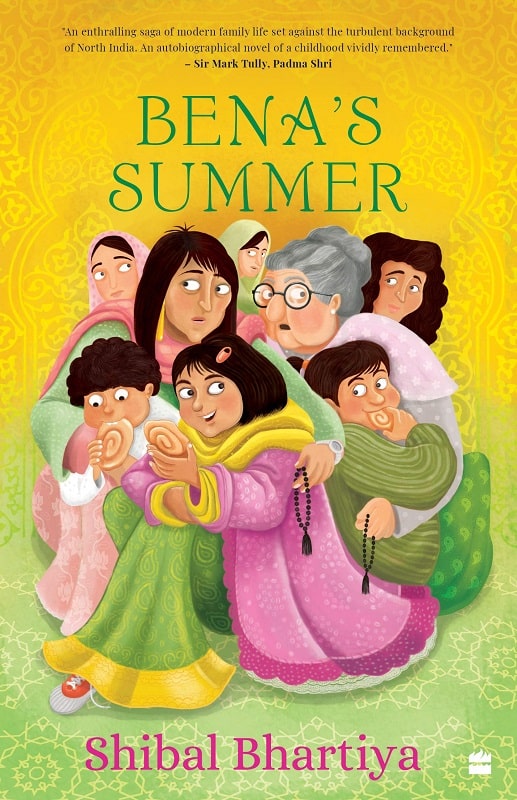PLOT: 4.5/5
CHARACTERS: 4.5/5
WRITING STYLE: 4.5/5
CLIMAX: 4.5/5
ENTERTAINMENT QUOTIENT: 4.5/5
Such is the grace of eight-year-old happy go lucky, Benazir (Bena to her friends and family) that she is described as “a forest nymph, a wood spirit, a fairy child.” “Bena’s Summer” opens with the chirpy Bena playing by the banks of the Phalgu river. What immediately grips the reader, even before the plot begins to unfold, is the captivating power of the descriptions used by Shibal Bhartiya.
There are colloquialisms in Hindi interspersed in the narrative, but they do not break the flow of the storytelling sequence. They add to it. They mesmerize with a charisma that gets enticing with each page. The intricately thought of descriptions will undoubtedly charm even a regular reader.
The language of the “Bena’s Summer” is laced with analogies of all things sweet and memorable. This brings the fictional world of Bena closer to reality. For example, the sand on the Phalgu river bank is compared to old silk dupattas with ‘salma sitaare ka kaam.’ This makes the reader reckon with a familiarity of substantial note as to the actual happenings of an ordinary girl from Northern India, in what Padma Shri Sir Mark Tully calls “an autobiographical novel of childhood vividly remembered.”
Bena is one of the children who live in Altamash Manzil in Gaya in a joint family set up. She along with her two cousins Zareena and Safia form the trio at home who enjoy mango pickles in the courtyard, get drenched in the name of having a bath on Eid, and go around the house having exciting escapades.
As much as such a setup is a source of fun and frolic, the kids also keep getting in and out of trouble. Eavesdropping is what they are good at, but interpreting accurately all that they hear is not a part of their skills. Yet Bena, being one of the youngest, is the life of the house. The little ones make mischief through their innocent ways but are still the apples of everyone’s eyes.
It is this vividity that marks the plot that revolves around Bena and highlights her innocence. Yet, innocence is not long-lasting for it is tested and tried. So is the case with Bena. Much like international politics that forms a large segment of the backdrop in which the novel is set, the family as a unit of society is reflective of familial politics surrounding generations.
The nuances picked in between the relaying of the incidents of the plot makes for a vivacious read. It requires active reading that the eye for detail of the author makes incumbent upon the reader. Missing out a piece of small information will lead to missing out on a bigger detail in the larger scheme of the storyline.
Full of multiple climaxes, a few chapters later there is a turn in the plot making the novel highly unpredictable. This is what keeps readers interested and makes the novel a refreshing read. It will not be wrong to say that it is a one-of-a-kind children’s book.
The plot of “Bena’s Summer” is at once light-hearted and humorous while being fast-paced and spellbinding. Nonetheless, beneath it all, is a highly intense and heart-breaking undertone that forms one of the major climaxes of the plot after Bena travels to Sultanpur.
It then becomes the story of one summer that changed a lot in Bena’s life and the lives of many around her, and this makes the book a rather serious children’s novel. The humor of the plot is such that it tickles and brings a smile with a sense of awe-inspiring momentum. It follows a moderate pace, though a lot is happening in the plot.
It is the characterization that touches upon the riveting plot with Bena being the protagonist. The plot is lined with several minor characters who add to the narrative and play humble roles but are irreplaceable. Without them, the mirth, the fun factor, and the suspense of the plot would be lost.
These characters also add dimensional variety to Bena. They bring forth her dependence on those older than her, their adoration towards her, and the beautiful familial bond that they all share.
The novel is a must-read for both young and old, though more appropriate for ages 10 and above, and more so for voracious readers. It is a great novel to be read out loud to children and one that will add to their knowledge and language skills.
There are ample moral lessons, though the book is not, in any sense, didactic in tone. However, it will be more enjoyable to a bilingual reader who is fluent in English and Hindi both, though the glossary at the end is highly useful for reference.
Can’t wait to read it? Buy your copy of “Bena’s Summer” using the link below.
